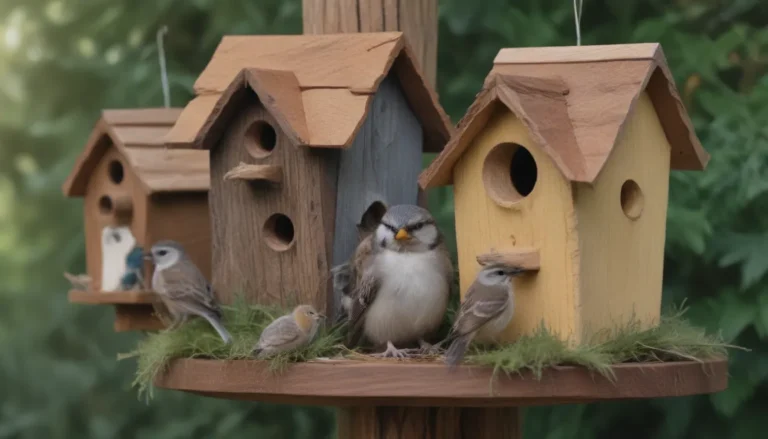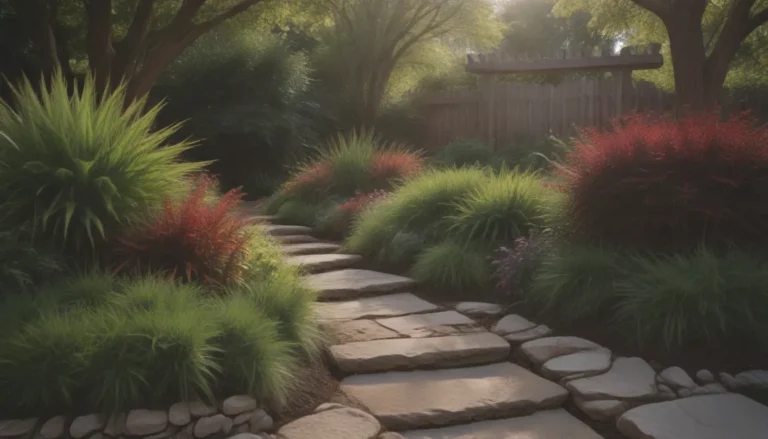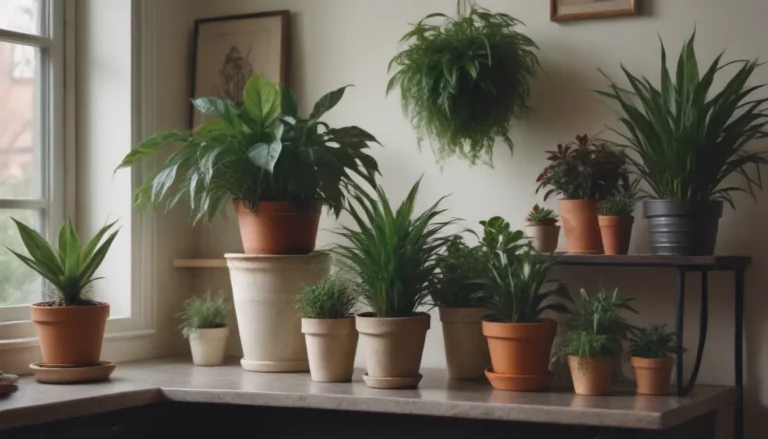The Ultimate Guide to Growing and Caring for Peonies

Have you ever dreamed of having a garden filled with beautiful, fragrant blooms in the spring? Look no further than peonies! These stunning flowers are the stars of any garden, with their large, showy petals and intoxicating scent. With as many as 33 different species within the genusPaeonia, there is a peony out there for everyone. Whether you prefer herbaceous perennials or woody shrubs, peonies are a versatile and beloved addition to any garden.
In this comprehensive guide, we will explore everything you need to know about growing and caring for peonies. From planting and propagation to pruning and pest control, we’ve got you covered. So grab your gardening gloves and let’s dive in!
Why Choose Peonies?
Peonies are not just any flowers – they are a symbol of elegance and beauty in the garden. Here are a few reasons why peonies should be at the top of your planting list:
- Large, showy blooms that come in a variety of colors and forms
- Intoxicating fragrance that fills the garden with a sweet aroma
- Long-lived plants that can thrive for decades with minimal care
With their stunning flowers and minimal care requirements, peonies are a must-have for any garden enthusiast.
Peony Care 101
To ensure your peonies thrive and bloom to their full potential, it’s essential to provide them with the proper care. Here are the main care requirements for growing a peony plant:
Light
Peonies thrive in full sun, so make sure to plant them in a location that receives at least six hours of sunlight each day. Without sufficient sunlight, your peonies may produce fewer blooms and smaller flowers.
Soil
Peonies prefer well-drained, slightly acidic soil with a pH of 6.5-7.0. If you have heavy clay soil, amend it with compost or a soil mix labeled for azaleas and rhododendrons to help your peony plant establish itself.
Water
Keep your peonies well-watered, providing 1 to 2 inches of water weekly. While peonies can tolerate moist soil, they are not drought-resistant. Mulch around your peonies to help them retain moisture and prevent weed growth.
Temperature and Humidity
Peonies prefer cooler climates and do best in hardiness zones 3-8. They require cold winters to thrive and produce beautiful blooms in the spring.
Fertilizer
Feed your peonies lightly with compost and a small amount of fertilizer after they finish blooming. Avoid smothering your peonies with mulch in the winter, as this can prevent proper dormancy.
Types of Peonies
From ‘Big Ben’ to ‘Sweet Marjorie,’ there are countless varieties of peonies to choose from. Each type offers its own unique characteristics, from flower color to fragrance. Here are a few popular varieties to consider for your garden:
- ‘Big Ben’
- ‘Festiva Maxima’
- ‘Pillow Talk’
- ‘Spider Green’
- ‘Sweet Marjorie’
With so many options available, you’re sure to find the perfect peony to suit your garden’s style.
Pruning and Propagating Peonies
Peonies require minimal pruning, but occasional maintenance is necessary to keep your plants healthy and thriving. Here are some tips for pruning and propagating your peonies:
Pruning
After your peonies have finished blooming, remove any dead stems and branches. If you notice any diseased or overcrowded branches, prune them back to promote healthy growth. Always cut back to just above a bud when pruning your peonies.
Propagating
If your peony plant begins to lose vigor or become crowded after about 10 years, it may be time to divide the root clump. Carefully lift and divide the roots into sections, then replant them immediately. Fall is the best time for dividing peonies to ensure successful propagation.
How to Grow Peonies From Seeds
Growing peonies from seed can be a rewarding but time-consuming process. Fresh seeds should be planted as soon as they are collected in summer or fall to increase germination rates. Patience is key, as it can take three to five years for seedlings to develop and bloom.
Planting and Transplanting Tips
When planting or transplanting your peonies, it’s essential to follow a few key steps to ensure their success. Here are some guidelines to help you plant and transplant your peonies with ease:
When to Plant
Peonies are best planted in the fall, about six weeks before the ground freezes. This allows the plants to establish roots before winter and ensures healthy growth in the spring.
Selecting a Site
Choose a location that receives full sun and is sheltered from strong winds. Peonies prefer well-drained soil and should be planted away from other trees and shrubs to prevent competition for nutrients and water.
Spacing, Depth, and Support
Give each peony plant ample space to grow and bloom by providing a 3- to 4-foot diameter around each plant. Plant peony roots relatively close to the soil surface, about 2 to 3 inches deep, to promote dormancy and bud development. Staking your peonies will provide additional support as they grow.
Transplanting
If you need to move an established peony plant, do so carefully to avoid damaging the roots. Fall is the best time to transplant peonies, as it gives the plants time to adjust before winter sets in.
Potting and Overwintering Peonies
While peonies are typically grown in the ground, they can also thrive in pots with the right care. Dwarf varieties are best suited for container gardening and should be placed in an 18-inch wide and deep pot. To overwinter potted peonies, move them to a sheltered location and cover the roots with mulch to protect them from freezing.
Common Pests and Diseases
Peonies are relatively low-maintenance plants, but they can be susceptible to a few common pests and diseases. Here are some tips for preventing and treating issues like gray mold and powdery mildew:
Gray Mold
Gray mold, or botrytis blight, can be controlled by ensuring proper air circulation and removing affected plant parts. Use copper soap fungicides as a preventative measure against this fungus.
Ants
While ants are attracted to peony blossoms, they do not harm the plant. Simply shake your cut peonies before bringing them indoors to remove any lingering insects.
Getting Peonies to Bloom
Peonies are known for their early spring and summer blooms, but there are a few tips to encourage more flowering:
- Provide at least six hours of sunlight each day
- Plant peony roots close to the soil surface
- Feed lightly once a year with compost and fertilizer
By following these guidelines, you can ensure your peonies produce an abundance of beautiful blooms year after year.
Wrapping Up
Peonies are a classic addition to any garden, offering stunning blooms and a delightful fragrance. With proper care and maintenance, these versatile plants can thrive for decades, bringing joy and beauty to your outdoor space. Whether you’re a seasoned gardener or just starting out, growing peonies is a rewarding and enjoyable experience.
So, roll up your sleeves and get ready to plant some peonies. With the tips and advice provided in this guide, you’ll be well on your way to creating a lush and vibrant garden filled with these exquisite flowers. Happy gardening!
References:
– Growing Peonies. University of Vermont Extension
– Peony. ASPCA
– Germinating Peony Seeds (Outdoor Method). The American Peony Society
For more information on peonies and how to care for them, visit IPM Missouri.





